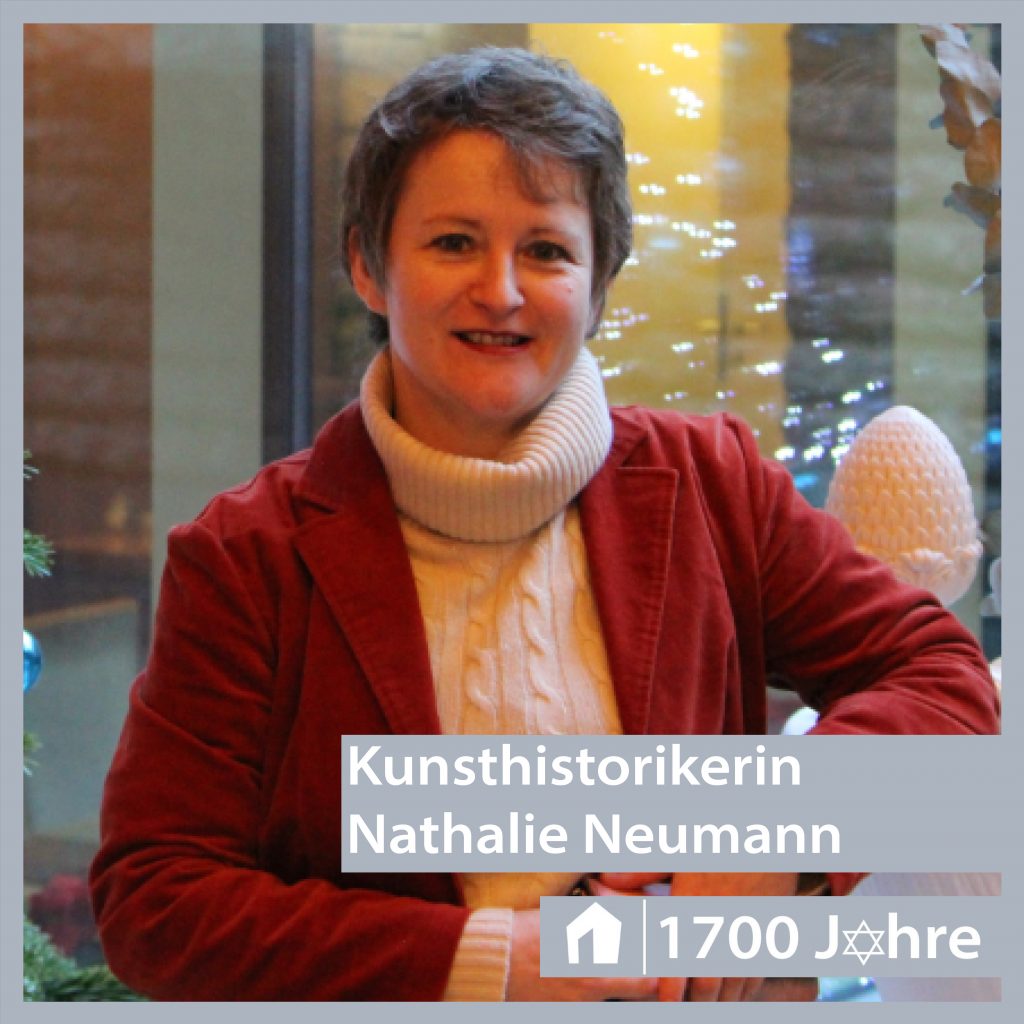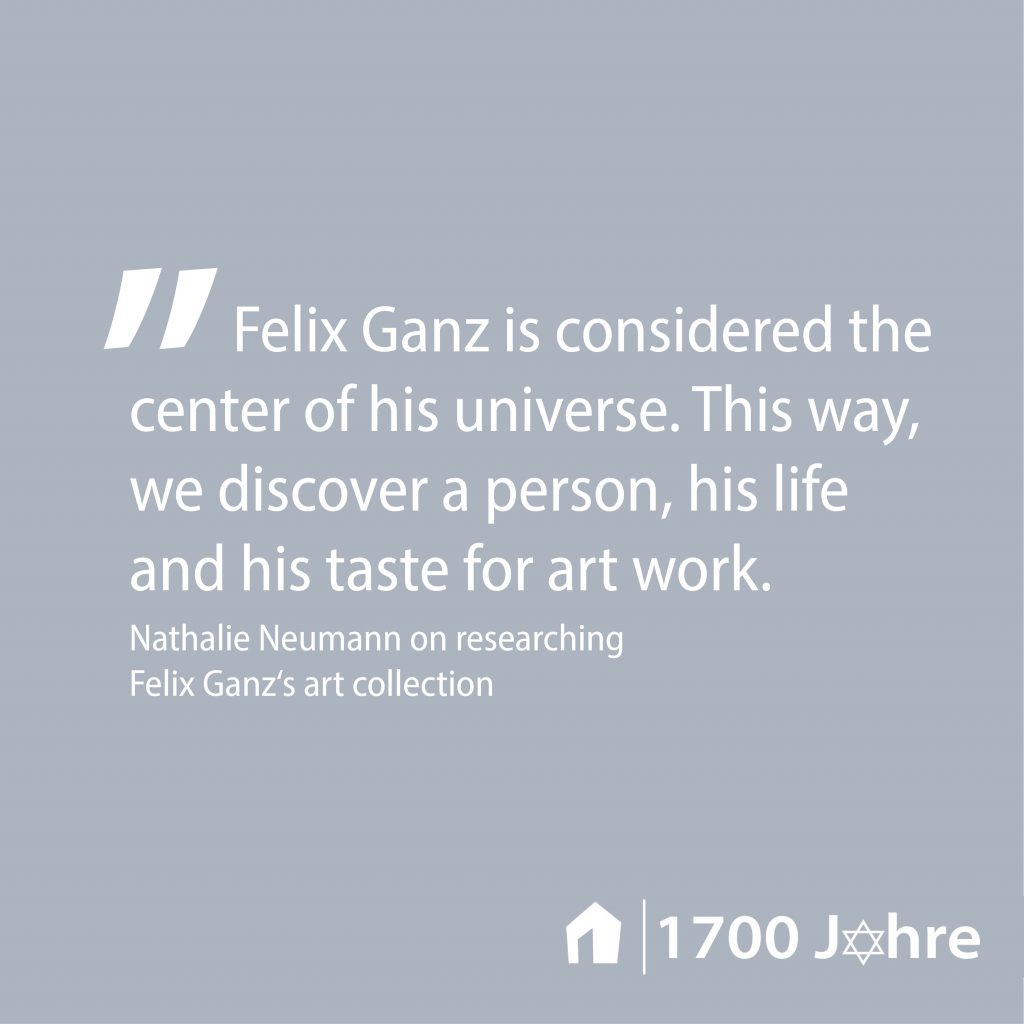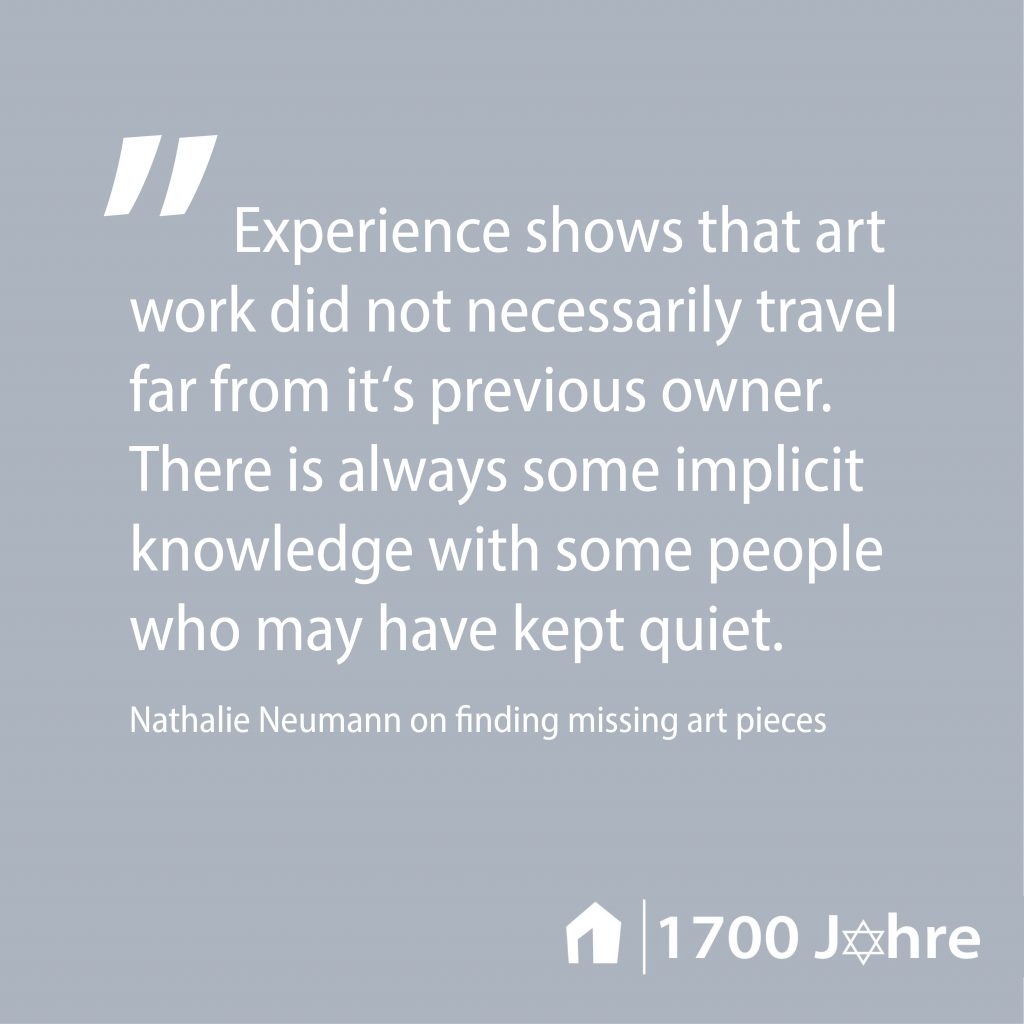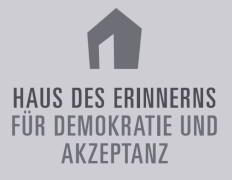Nathalie Neumann is an art historian focusing on French and German subjects. For the last 15 years, her research and publications have focused on Julius Freund’s art collection and the restitution of looted art. Since April 2020, she has worked at the University of Mainz as a researcher focusing on the reconstruction of the art collection of Felix Ganz (1869–1944), a collection composed of “far and near eastern” art objects. We spoke to her about Felix Ganz, his collection and the importance of art restitution.
Interview: Zoë Shannon | May 2022

About
Nathalie Neumann has studied and worked in Freiburg/Breisgau, UMass Boston, EHESS Paris, Tokyo and Berlin. She has participated in numerous exhibitions and conferences focused on documentary photography and cultural exchanges between Germany and France and has also worked for both the Canadian and French embassies in Berlin. From 2016 to 2017, she was a member of the Gurlitt Research Team focusing on French and East-Asian art objects. Between 2017 and 2019, Neumann was a provenance researcher with the art collection of the federal German government, focusing on artworks connected to the CCP and their remaining administrative archives.
Photo: Rosie Turner
Your research focus is on art restitution. What role, in your opinion, does art restitution play in the memorialization process?
My research focus is on provenance which can lead to restitution. It is the research of provenance and therefore on owners of art objects which should be a contribution to memorial culture within German society. My conviction is that researching art objects should not hide the life of the owners. The method we develop on the Felix Ganz collection for which we have only limited information is to analyze the network of exchange on and about the available artwork. Felix Ganz is considered the center of his universe. This way, we discover a person, his life and his taste for art work.
You recently taught a class at Johannes Gutenberg University that focused on the reconstruction of Felix Ganz´s art collection. Can you describe how this class was organized and what it entailed?
The class I gave was an introduction to provenance research for all students interested in the question. I used the stories of Felix Ganz, a Jewish businessman from Mainz, his person and life, to encourage the interest of the students to think about other collectors in the city of Mainz. The students received tools and information on provenance research in general. Then they were given a specific topic to research, examples included: a biography of a Jewish art collector whose collection has disappeared and art objects held at the Landesmuseum Mainz with unknown or unclear provenance.
It was important to go to archives during the Covid-19 pandemic to allow students to meet and to see original documents and items. We were very lucky that the Landesmuseum Mainz, the Stadtarchiv Mainz, and the Landesbibliothek in Speyer were so kind to receive us and to give us introductions to their archives and collections.

How do you perceive the importance of this hands-on approach, like these field trips, in the art history and, more specifically, Holocaust studies field?
Throughout my work with the art collection of Germany (Kunstverwaltung des Bundes), visits to the archive of restitution claims, and searches for items (many of which sit next door to the Kunstverwaltung des Bundes), it became more clear to me how many art objects and other belongings of millions of people went missing. On the other hand, the museums in Europe are filled with so many items of which their provenance is unknown. I felt the two ends of the same thread do not meet. The key lies for me in the knowledge of the past of an owner, which in the present becomes memory. If we know a lot about an owner: his taste, his friends, neighbours, colleagues, travels, etc., we can also find some of the items which belonged to him. Experience shows that art work did not necessarily travel far from its previous owner. There is always some implicit knowledge with some people who may have kept quiet. There is evidence in the mirror history of Jewish families exemplified in the still existent correspondence with non-Jewish people.

With many descendants of victims of National Socialism still searching for their families‘ heirlooms, how would you guide them in the restitution process?
There should be in every country of loss a red telephone allowing dialogue in several languages with a real person. This person should have some knowledge of archival work and how to orientate the families to researchers in specific fields and regions.
For example, two years ago Germany/ DZK Foundation created (finally!) a help desk for victims of the National Socialist regime and their descendants offering advice and assistance in matters relating to Nazilooted art/objects.
What are your wishes, if any, for memorialization of the victims of National Socialism?
There are already many forms of memorialization of the victims of National Socialism, but some of them are quite abstract especially for younger people who need to understand on one side that a very violent historical context but also on the other that real people were persecuted, murdered and all traces of their existence made to disappear.
I very much appreciate the “Stolpersteine” together with the online biographies.
I also think that the initiative in Berlin-Schöneberg “Wir Waren Nachbarn” is very interesting and allows us to meet with people from the past, being touched by their life and of their terrible disappearance. The different cities should help to research individual persons and show how the German society prior to 1933 was interdependent between its different communities.
Many are still searching for their families‘ looted heirlooms. The German Lost Art Foundation offers the →Help Desk for Enquiries about Cultural Assets seized in the National Socialist Era: The Help Desk offers victims of the National Socialist regime and their descendants advice and assistance in matters relating to Nazi-looted art. The Help Desk assists with initial steps and provides further contacts and information. Staff are also pleased to facilitate contact with museums and other institutions.
The reconstruction of Felix Ganz´s art collection is an ongoing project. For further information can be found →here. In 2022 a short →documentary on Felix Ganz and his collection was broadcast.





